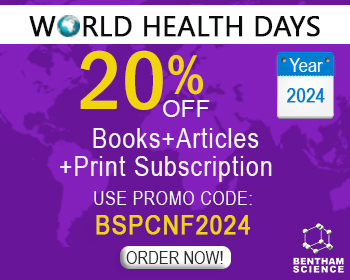Abstract
Background: Polyalthia longifolia which originates from India is rich with various useful phytochemicals which are valuable for human health. Accordingly, the current study was conducted to evaluate the combinational antimicrobial activity of P. longifolia Ethyl Acetate Fraction (PLEAF) with ampicillin, antioxidant and cytotoxicity activities.
Methods: The evaluation of the synergistic activity of PLEAF fraction and ampicillin against MRSA local isolate was conducted with various antimicrobial assays.
Results: The Minimum Inhibitory Concentration (MIC) values of PLEAF fraction (62.5 μg/mL) and ampicillin (5000 μg/mL) were found to decrease to 15.63 μg/mL for PLEAF and 2500 μg/mL for ampicillin respectively in the Fractional Inhibitory Concentration (FIC) assay against the MRSA bacteria. The 2,2-diphenyl1-picrylhydrazyl (DPPH) and nitric oxide free radical scavenging activities showed that PLEAF fraction possessed high antioxidant activity and the combinational of PLEAF fraction and ampicillin exhibited moderate antioxidant activity. The total phenolic content (TPC) of PLEAF was 168.22 ± 0.00407 μg GAE/g of PLEAF fraction.
Discussion: Phenolic compounds might be responsible for the observed antioxidant and antimicrobial activity of PLEAF fraction. In addition, in 3-(4,5-dimethylthiazol-2-yl)-2,5-diphenyltetrazolium bromide (MTT) cytotoxicity test against Vero cells the PLEAF fraction was proven to be non-toxic (98.14% of cell viability) and the combination of PLEAF fraction and ampicillin treatment against the Vero cells showed an improved cell viability (52.44%) as compared with ampicillin alone in the treated group.
Conclusion: The PLEAF fraction works well in combination with ampicillin to kill the MRSA local resistance strain. PLEAF fraction also showed favourable antioxidant activity and improved Vero cell viability in the presence of ampicillin which is an important attribute of PLEAF fraction to be used in the future combinational therapy.
Keywords: Combinational therapy, Polyalthia longifolia, resistant Staphylococcus aureus, antibacterial agent, natural product, nonsusceptibility.
[http://dx.doi.org/10.1155/2016/4065603]
[http://dx.doi.org/10.3390/medicina47030019]
[http://dx.doi.org/10.1016/j.tibtech.2012.12.006]
[http://dx.doi.org/10.1016/j.jep.2005.10.026]
[http://dx.doi.org/10.1016/j.addr.2009.05.006]
[http://dx.doi.org/10.1016/j.apjtb.2015.09.024]
[http://dx.doi.org/10.1071/SP08011]
[http://dx.doi.org/10.15376/biores.8.4.5102-5119]
[http://dx.doi.org/10.1002/ptr.1333]
[http://dx.doi.org/10.1016/j.biopha.2017.02.075]
[http://dx.doi.org/10.1016/j.ejmp.2015.10.090]
[http://dx.doi.org/10.7324/JAPS.2013.30226]
[http://dx.doi.org/10.4314/tjpr.v8i3.44533]
[http://dx.doi.org/10.1093/ajcp/45.4_ts.493]
[http://dx.doi.org/10.1093/jac/11.5.427]
[http://dx.doi.org/10.1056/NEJM199410203311604]
[http://dx.doi.org/10.1038/1811199a0]
[http://dx.doi.org/10.1016/0003-2697(82)90118-X]
[http://dx.doi.org/10.1016/0022-1759(83)90303-4]
[http://dx.doi.org/10.1186/1476-0711-10-25]
[http://dx.doi.org/10.1128/JCM.01195-16]
[http://dx.doi.org/10.1111/j.1863-2378.2010.01340.x]
[http://dx.doi.org/10.9734/EJMP/2017/35002]
[http://dx.doi.org/10.1186/cc7774]
[http://dx.doi.org/10.1016/j.mib.2013.06.014]
[http://dx.doi.org/10.1099/jmm.0.022426-0]
[http://dx.doi.org/10.1016/B978-0-12-387044-5.00001-7]
[http://dx.doi.org/10.1086/381972]
[http://dx.doi.org/10.1016/B978-0-7020-4064-1.00012-9]
[http://dx.doi.org/10.2174/1573407211666151002002131]
[http://dx.doi.org/10.1073/pnas.030540597]
[http://dx.doi.org/10.1186/s12906-015-0699-z]
[http://dx.doi.org/10.1186/1476-0711-11-5]
[http://dx.doi.org/10.4103/phrev.phrev_21_17]
[http://dx.doi.org/10.1016/j.chroma.2007.01.127]
[http://dx.doi.org/10.1007/s002030000140]
[http://dx.doi.org/10.1101/gad.12.21.3431]
[http://dx.doi.org/10.1016/S0168-1605(03)00142-9]
[http://dx.doi.org/10.1093/jac/dkl393]
[http://dx.doi.org/10.1007/s13197-011-0251-1]
[http://dx.doi.org/10.1021/jf0502698]
[http://dx.doi.org/10.1126/science.1948068]
[http://dx.doi.org/10.1155/2017/3496043]
[http://dx.doi.org/10.1038/35016151]
[http://dx.doi.org/10.1371/journal.pone.0172273]
[http://dx.doi.org/10.5923/j.microbiology.20120206.04]
[http://dx.doi.org/10.1002/9780471729259.mca04es11]



























